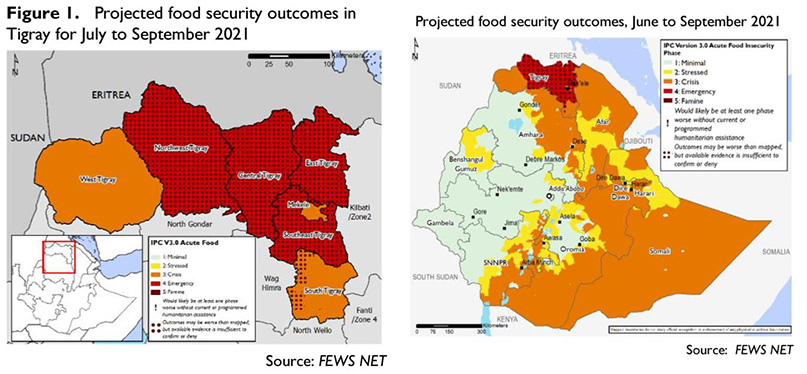Nationwide food shortage, inflation, and lack of regional autonomy in all of Ethiopia are driving a new coalition from many regions to act against the rule of Abiy Ahmed’s Prosperity Party. Although the Tigray conflict gets the most attention armed resistance is now active in Oromia, Amhara, Afar, Somali, and Gambella regions of Ethiopia. These other actions are clearly becoming more aggressive given the recent advances of the Tigray Defense Force.

Since 2018 the government of Abiy Ahmed and the Prosperity Party has focused on city improvement in Addis Ababa to make it a “true capital city of Africa” Meanwhile food production and agricultural improvement projects throughout Ethiopia have been put on a low priority. Many local government leaders were pushed aside or forced to join the Prosperity Party which obligated them to this Addis Ababa first policy and abandoning local concerns.
The World Food Program forecast for food security extending to January 2022 of Ethiopia sees famine to crisis level conditions continuing in not only Tigray but also the whole south regions of Ethiopia. Somali region will have below levels of food supply. The worst area remains southeastern Tigray.
Recurring drought over the past decade without real attention to improving overall production has added to the need for necessary food imports to have remained at least 15% and may grow. Higher prices for seeds and agricultural materials like fertilizer along with inflation (now at 45% this year -the birr trading near 50 per US dollar) means it will harder for farmers to be ready to plant their crops or at least do so in lesser volume. Lesser rains limit the amount of pasture grazing available to raise livestock such as goats, sheep, and beef. Sheep are the most demanding and its availability is now sharply curtailed.

Ethiopia has major growing season and minor growing season extremely dependent on rain patterns. Belg is the shorter season from February to April, and meher is the main season from May to September (they have different names in different regions). These patterns have become increasingly unpredictable. Total annual grain production (including mainly corn, wheat, sorghum, barley, and teff) greatly depends on rainfall patterns during the belg season.

